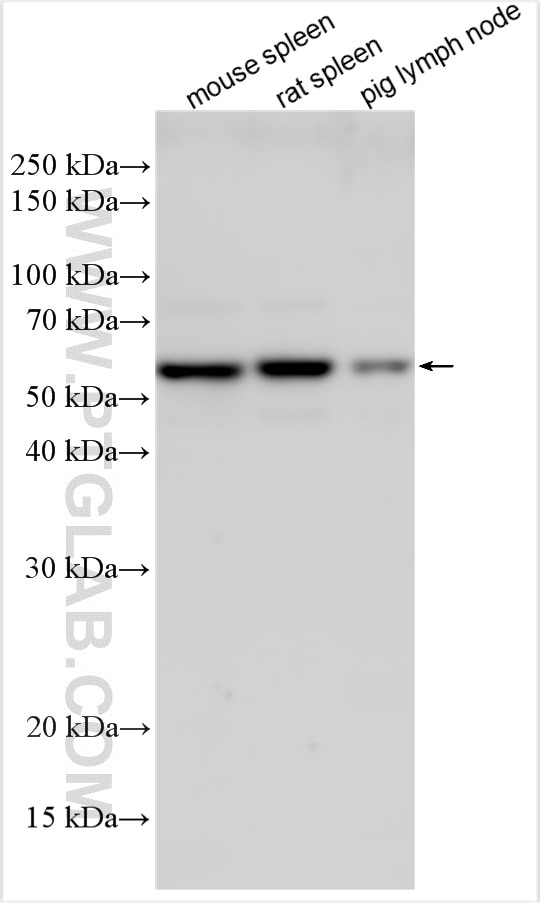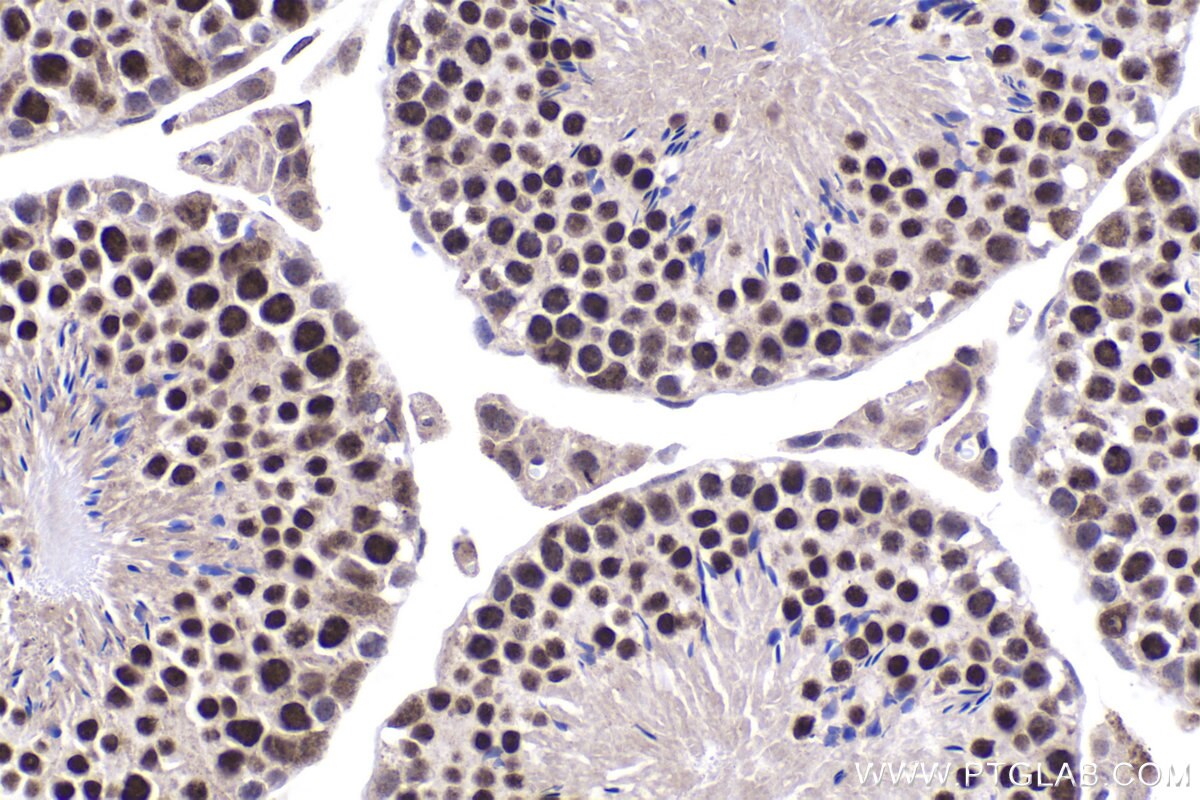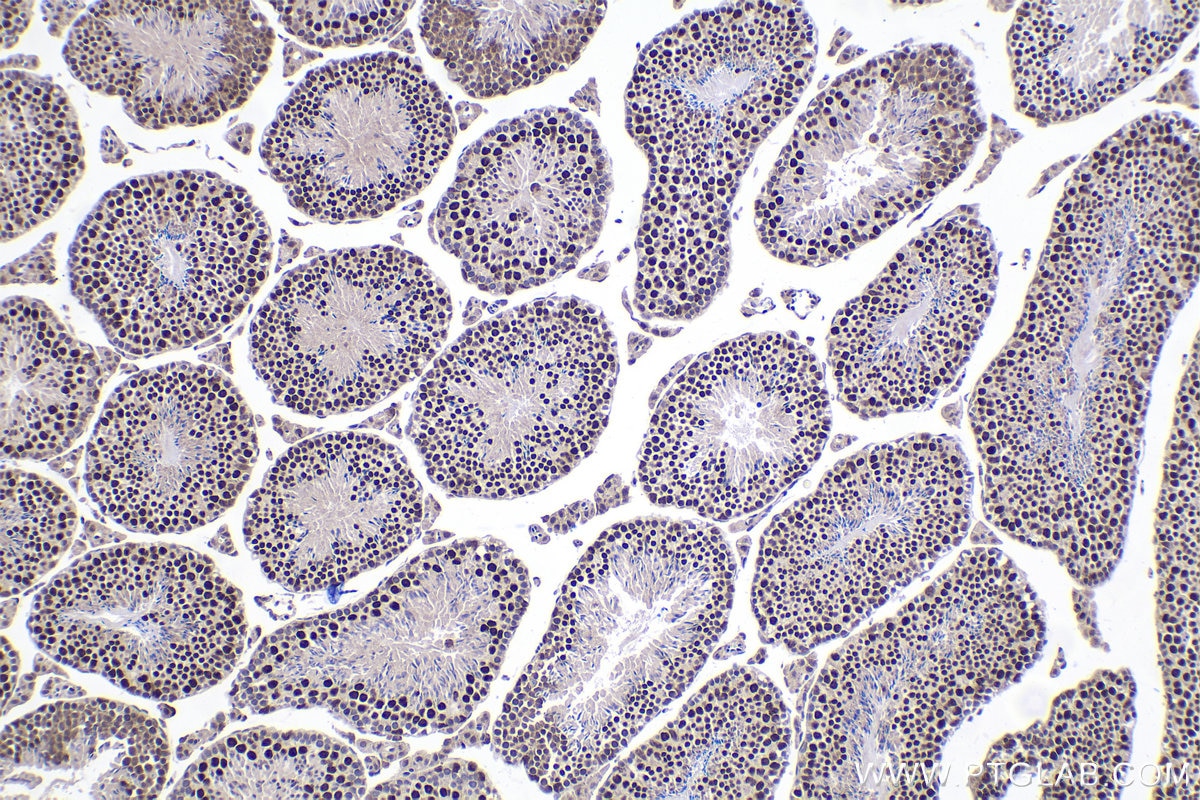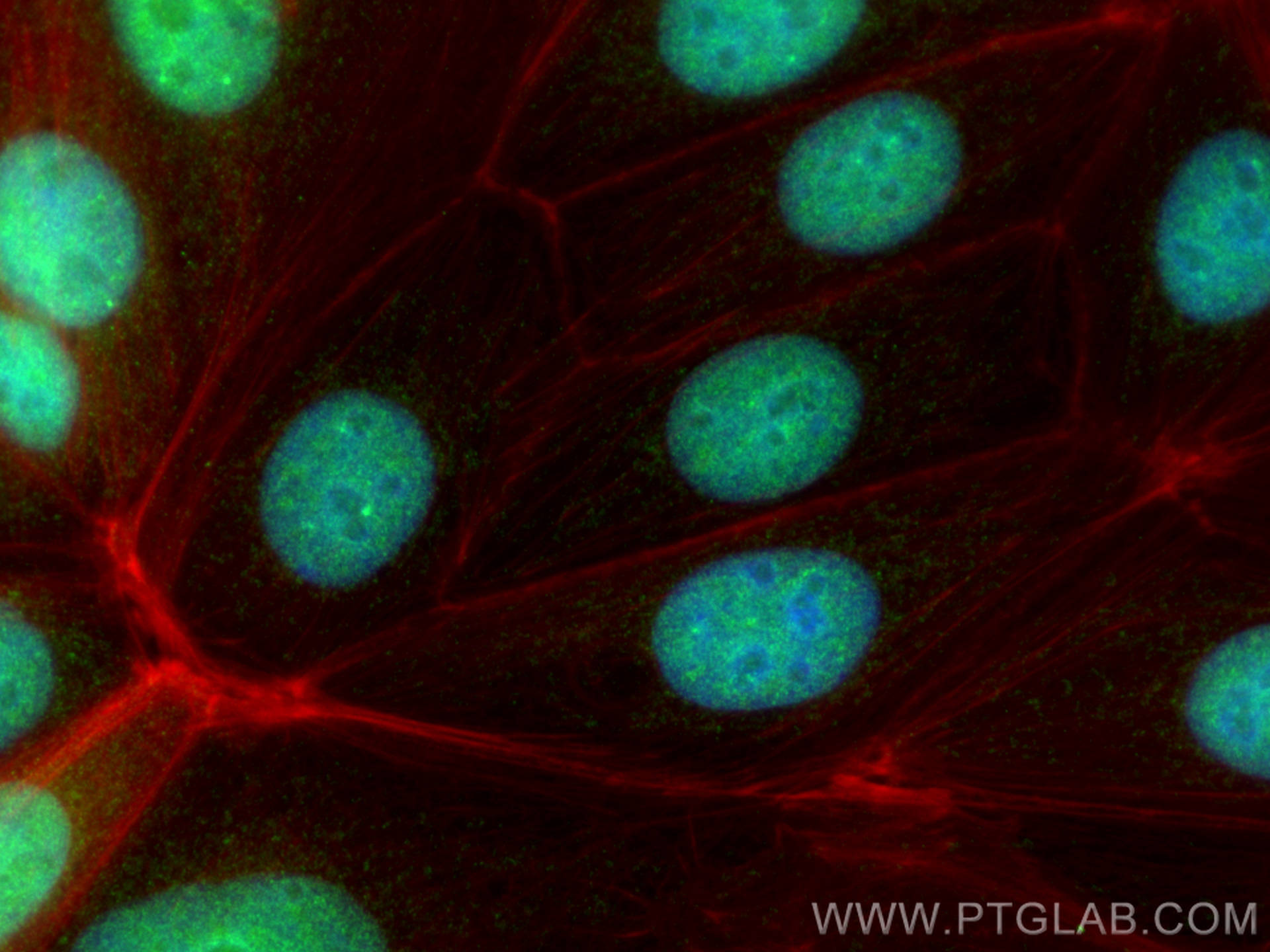ZBTB32 Polyklonaler Antikörper
ZBTB32 Polyklonal Antikörper für WB, IHC, IF/ICC, ELISA
Wirt / Isotyp
Kaninchen / IgG
Getestete Reaktivität
Hausschwein, human, Maus, Ratte
Anwendung
WB, IHC, IF/ICC, ELISA
Konjugation
Unkonjugiert
Kat-Nr. : 12516-1-AP
Synonyme
Geprüfte Anwendungen
| Erfolgreiche Detektion in WB | Mausmilzgewebe, Rattenmilzgewebe |
| Erfolgreiche Detektion in IHC | Maushodengewebe Hinweis: Antigendemaskierung mit TE-Puffer pH 9,0 empfohlen. (*) Wahlweise kann die Antigendemaskierung auch mit Citratpuffer pH 6,0 erfolgen. |
| Erfolgreiche Detektion in IF/ICC | MCF-7-Zellen |
Empfohlene Verdünnung
| Anwendung | Verdünnung |
|---|---|
| Western Blot (WB) | WB : 1:1000-1:4000 |
| Immunhistochemie (IHC) | IHC : 1:200-1:1000 |
| Immunfluoreszenz (IF)/ICC | IF/ICC : 1:200-1:800 |
| It is recommended that this reagent should be titrated in each testing system to obtain optimal results. | |
| Sample-dependent, check data in validation data gallery | |
Produktinformation
12516-1-AP bindet in WB, IHC, IF/ICC, ELISA ZBTB32 und zeigt Reaktivität mit Hausschwein, human, Maus, Ratten
| Getestete Reaktivität | Hausschwein, human, Maus, Ratte |
| Wirt / Isotyp | Kaninchen / IgG |
| Klonalität | Polyklonal |
| Typ | Antikörper |
| Immunogen | ZBTB32 fusion protein Ag3199 |
| Vollständiger Name | zinc finger and BTB domain containing 32 |
| Berechnetes Molekulargewicht | 487 aa, 53 kDa |
| Beobachtetes Molekulargewicht | 53 kDa |
| GenBank-Zugangsnummer | BC017700 |
| Gene symbol | ZBTB32 |
| Gene ID (NCBI) | 27033 |
| Konjugation | Unkonjugiert |
| Form | Liquid |
| Reinigungsmethode | Antigen-Affinitätsreinigung |
| Lagerungspuffer | PBS with 0.02% sodium azide and 50% glycerol |
| Lagerungsbedingungen | Bei -20°C lagern. Nach dem Versand ein Jahr lang stabil Aliquotieren ist bei -20oC Lagerung nicht notwendig. 20ul Größen enthalten 0,1% BSA. |
Hintergrundinformationen
The zinc finger and BTB domain containing 32 (ZBTB32) protein, also known as testis zinc finger protein (TZFP) or repressor of GATA (ROG), is a transcription factor belonging to the BTB/POZ-ZF protein family. It is encoded by the Zbtb32 gene, located on proximal chromosome 7 in the mouse genome. ZBTB32 was shown to ensure proper regulation of meiosis during spermatogenesis by acting as a repressor of the androgen receptor (PMID: 22851713, 34337361).
Protokolle
| PRODUKTSPEZIFISCHE PROTOKOLLE | |
|---|---|
| WB protocol for ZBTB32 antibody 12516-1-AP | Protokoll herunterladen |
| IHC protocol for ZBTB32 antibody 12516-1-AP | Protokoll herunterladenl |
| IF protocol for ZBTB32 antibody 12516-1-AP | Protokoll herunterladen |
| STANDARD-PROTOKOLLE | |
|---|---|
| Klicken Sie hier, um unsere Standardprotokolle anzuzeigen |





